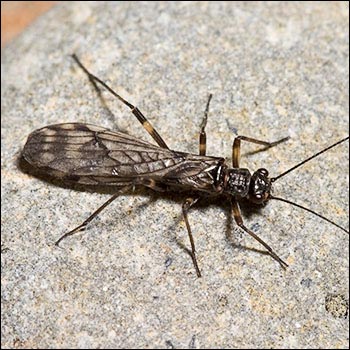Finally I get a chance to make an actual fishing report since the blog's creation, and what a trip. I hit Oregon's Crooked River, a river I have not fished in a while! It's an interesting little river, with it's spring creek-ish layout and its murky water that the trout are still able to see through to eat a size 20 insect. As for insects, Blue Winged Olives and Midges are the prime food sources during winter, in addition to the prominent population of scuds. The Crooked River is great for winter fishing due to it being a tailwater that has a steady temperature throughout the cold spells that plague Central Oregon. Of course, all of Oregon knows this as well, and the river was peppered with fly fishermen. I even saw one catch a fish in the brief time we drove by him. Fortunately, I found a beautiful stretch all for myself and began casting a Size 18 Purple Haze along the glassy surface.

I could see the parachute fly fairly well on the surface, and I fished quietly for several minutes. Of course, fishing in the open with bare hands soon turned my hands into stiff mannequin appendages. Holding my rod and fly line was tricky enough, and untangling my tippet from the tules on the shore that I would frequently snag on was even worse. At one point my hook got embedded in my finger past the barb. Yes, I know it's barbless hooks only, but I filed it down after I ripped it out. The point was, it was so cold I couldn't feel the pain of a hook being ripped out of my finger, even with blood drawing. Sucking on my finger, I continued to work my way across the river. I cast my line across a likely stretch and was rewarded with a small, ten inch native Redside. Of course, I left my camera phone in the car as I always do after catching any beautiful fish (I did not forget it on the Depoe Bay Ling Cod Tournament or the Squawfish Ransom Fundraiser However!) I gently released it and immediately went back to the car to get a pair of mittens. Of course, once I put the mittens on came the five minutes of excruciating pain that one always feels when heating your hands after being out in the cold, but it eventually subsided.
As the day continued without any more strikes, I began noticing things about fly fishing. Like how cars always drive by when you're untangling your line from the tules or making a sh*tty cast, and how they disappear when you double haul fifty feet with a drag free drift. I fished the same stretch of river some more, and was watching my fly drift by a rock when a trout slurped my fly in. Bumbling to grab the line with my mittens, I miraculously was able to grab it and strip the trout in. It turned out to be sixteen inches, a nice fish for the river, and I gently released it back into its home. Soon, my parents called my and told me it was time to leave. I would have gladly stayed longer, but in a way that beautiful trout was a perfect way to end things.

















